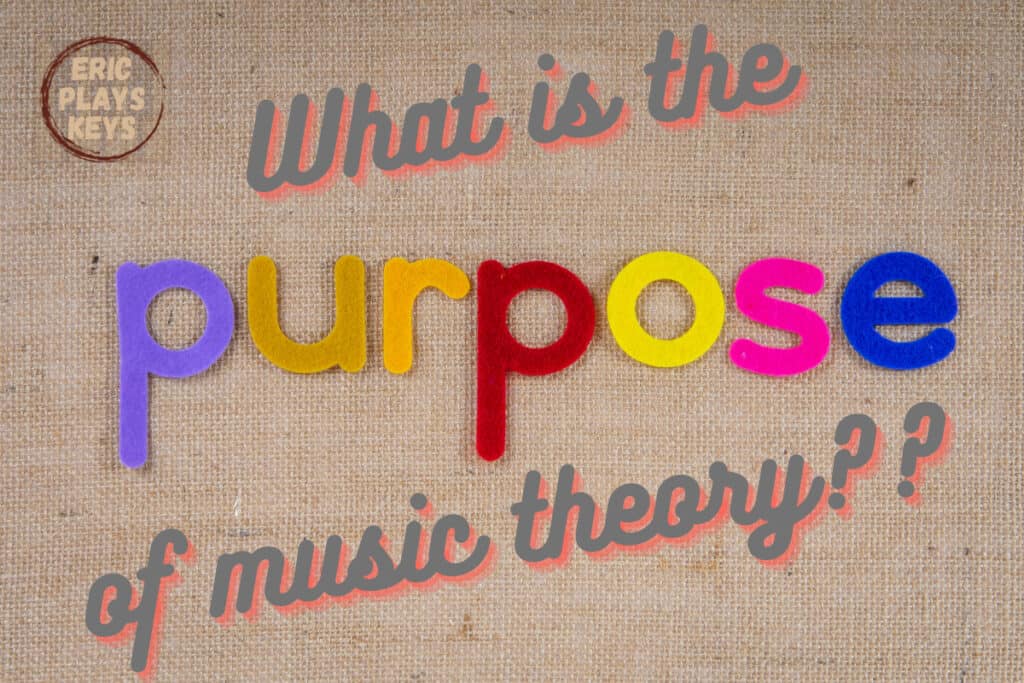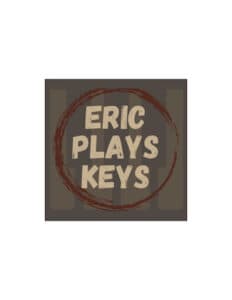
Music theory can be a challenging topic to learn, which leads many students to ask why it’s necessary. If you can play music without learning music theory, then why bother? However, music theory does have a specific purpose, which is important to know about.
The purpose of music theory is to explain why the elements of music function. Music theory can be applied to help write and understand music, but can’t generate music by itself.
In this article, I’ll expand on how music theory can help us understand why music works, identify the limitations of music theory, and give you some practical ways to harness music theory in your studies!
Music Theory Defines and Explains What We Hear
Overall, music theory provides a framework and a system for defining and explaining music. We all intuitively know that songs have structure and underlying reasons for why they sound and feel the way they do, but it takes training to put this into words. Definitions allow us to identify musical elements that are employed to convey specific sounds and feelings, and explanations enable us to why those elements do, in fact, convey those sounds and feelings.
First, we will cover definitions. It’s not difficult to understand the fundamental difference between music and noise, but it is difficult to say why. Music theory attempts to resolve this issue by allocating terms to sounds that create music. If a given sound contains many elements that have corresponding music theory terms, then it is likely that the sound is music! Conversely, a sound like a siren, although it may have a small handful of theory terms, would not qualify as music.
So, what kind of terms does music theory contain? There’s a vast number, but a few common ones include tempo, chords, melody, and rhythm. Tempo ascribes a term to how fast or slow the music is playing, with specific speeds falling into varying groupings. Chords define groups of notes and pitches that combine appropriately. Melody refers to the primary voice that listener’s ears are drawn to. Rhythm refers to the timing in which notes and sounds are created.
One way I like to think about these terms is that they turn previously undefined concepts into ‘a thing’. In English, if there’s a word for a concept or idea, it’s ‘a thing’. That means that it’s widely accepted and agreed upon that the concept is valid and experienced by others. If there’s a musical term for something, then it’s ‘a thing’, and it can be found within many songs and musical material.
Music theory also attempts to provide explanations to questions like ‘why are these notes arranged the way they are?’, and ‘why does this chord sound good?’. Although it’s not an exact science, music theory does provide logical explanations.
For example, music theory can explain why a certain chord progression was used. At the end of a song, there may be a 5 chord, followed by a 1 chord. Music theory would ascribe the term ‘authentic cadence’ to the sequence of chords, and ascribe the 1 chord as the ‘tonic’ and therefore an appropriate resolution and ending chord. Once definitions are established, music theory could be used to identify the notes in the 5 chord that are in close proximity to the 1 chord, and explain that the slight movements of the 5 chord notes to the 1 chord notes is what causes the listener to experience the feelings of ‘resolution’ and ‘end of song’.
Another music theory element that explains why notes are chosen is scales. Scales are a series of notes that are compatible with the key the song is in. The answer to the question ‘Why were these notes chosen to exist on the song, while others aren’t?’ is most commonly answered by ‘The notes in the song are in within the scale, while the excluded notes aren’t’.
It’s important to bring up a caveat here: music theory doesn’t define and explain everything. It does a great job at covering a lot of commonly seen musical elements, and explaining them as much as possible, but it can’t explain human creativity.
What Music Theory Cannot Do
Music theory cannot completely dictate how to write music, or how to be creative. It can serve as a useful guide for writing and understanding music, but can’t be used by itself to synthesize music.
Ultimately, music is derived from personal expression and communication. Music theory is a very good attempt to outline how and why this is done, but can’t completely explain where music comes from and why people connect to music.
I like to use spoken language as an analogy to explain this phenomenon. Everyone speaks, everyone enjoys language, and everyone knows how to express themselves through language. We also have grammar to explain the rules to language, why words are constructed the way they are, and how they work together. However, grammar can’t explain why we use words in the first place.
We learn how to speak before we learn grammar, because grammar isn’t used to synthesize language. In fact, many people don’t even know a thing about grammar, yet can still effectively communicate with words.
The analogy is that music is to music theory as spoken language is to grammar. Grammar and music theory explain spoken language and music after the fact, after the language and music already exists. The language and music theory come from people’s inspiration, and then is analyzed later.
Can you imagine using a grammar book to figure out how to speak? It’s not impossible – many students learn foreign languages like this. However, fluency is never derived from textbooks, only real world practice. The same applies to music – music theory is not going to aid anyone in writing authentic music. At best, it is a useful supplement for a person’s creativity.
What Can You Do With Music Theory Knowledge?
Music theory can be used to help read music, write music, communicate with other musicians, and understand songs. It is a useful supplement for learning and playing music, along with real world experience and practice.
One beneficial area music theory covers is written musical notation, or how to read music. Although reading music is not essential (see ‘Learning Piano Without Reading Music‘), it helps learn new material quickly. In addition, for gigging musicians, sometimes reading is essential because band members may have their songs written out. For classical musicians, reading music is an absolute must because all classical pieces are written out.
As far as writing music goes – this one is complicated. There are great writers and composers who don’t know music theory, and great ones who do. I’m of the opinion that music theory is a very useful tool for writing music, but talented musicians can get by without it. Writing good music requires inspiration, but knowledge of music theory can help guide your intuitions and inform your decisions. On the other hand, you don’t want to make creative decisions solely on musical theory concepts – this will make your music sound stale and uninspired.
Knowledge of music theory terminology will assist you in communication with other musicians, if you plan to play in a group. Being able to call out the required tempo, the chord changes, and rhythms will allow efficient information transfer between the members of the band. This will definitely shorten rehearsal times. In one band I played in, our rehearsals lasted 3+ hours because the drummer had to figure out how to explain every aspect of the song to each individual musician. It was an absolute pain, although we still made great music (scroll to Mama Tumba, 2017 in Eric’s Bio).
Finally, knowing music theory can help you understand new music and why it was written the way it was. For example, a knowledge of chord progressions and scales can help you figure out why a song has certain melody notes on certain chords, and not others. If the song moves from major to minor, you might be able to understand why the minor key was chosen (every major key as a parallel minor key). Although you can never truly ‘get in the head’ of the composer, music theory can help bridge that gap somewhat.
